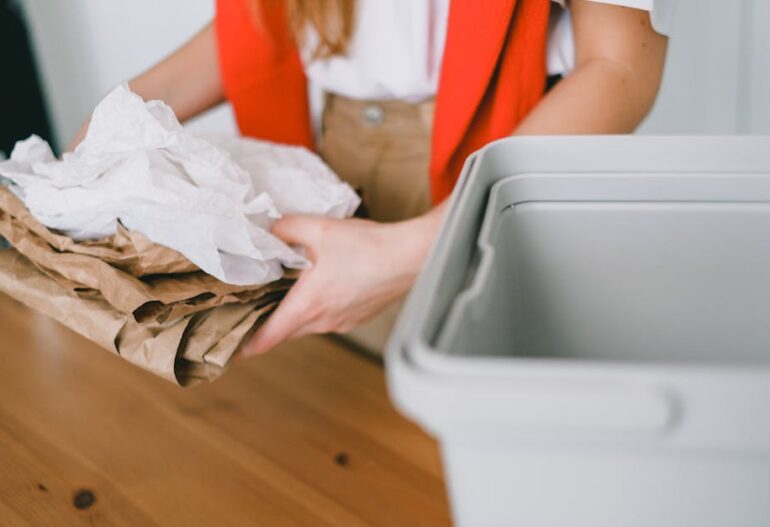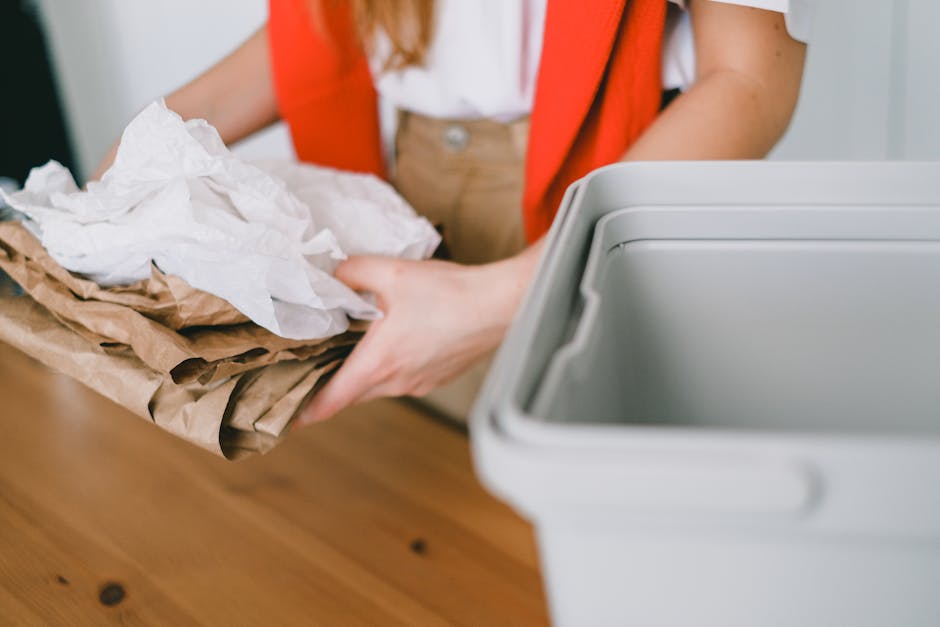Introducing recycled paper bags
Recycled paper bags are an environmentally friendly alternative to single-use plastic bags. These bags are made by collecting old paper materials, breaking them down into fibers, mixing them with water, and pressing them into new paper sheets. The sheets are then cut and folded into bags, ready to be printed with custom designs or logos. Using recycled paper bags helps reduce the demand for new paper production, which can help save trees and reduce waste in landfills.
The importance of recycling in paper bag production
Recycling plays a vital role in making paper bags. By using recycled materials, we help reduce the demand for new resources like trees. This process helps in conserving energy and water. Additionally, it minimizes the amount of waste that ends up in landfills. So, when you opt for paper bags made from recycled materials, you contribute to a more sustainable and eco-friendly production cycle.
Collection of recycled materials for paper bags
Recycling centers gather used paper and cardboard for making recycled paper bags. Trucks collect these materials from homes, businesses, and recycling drop-off points. Sorting facilities then separate the paper from other recyclables like glass and plastics. Machines help in breaking down the paper into fibers that are further cleaned and screened to remove contaminants. These cleaned fibers are then mixed with water to create a pulp, ready to be formed into new recycled paper products.
Sorting and cleaning process
Recycled paper bags start their journey by being separated into different types of paper at recycling facilities. This sorting ensures that only suitable paper gets used for making new bags. Once sorted, the paper undergoes a thorough cleaning process to remove any contaminants like inks or tapes. The cleaned paper is then ready to be transformed into fresh, eco-friendly paper bags.
Conversion of recycled materials into paper pulp
Recycled paper bags start with old paper being collected and sorted by type. Papers are then soaked in water to create a pulp mixture. During this process, contaminants like glue and plastic are removed. The pulp is then refined and cleaned to make it ready for papermaking. Finally, the pulp is pressed, dried, and rolled into thin sheets, which are later printed with designs and logos to create recycled paper bags.
Shaping the paper pulp into bags
To shape the paper pulp into bags, the recycled paper fibers are mixed with water to create a pulp mixture. This mixture is then poured into a mold in the shape of a bag. Pressure is applied to compact the pulp and remove excess water. Afterward, the pulp is dried, forming a solid and sturdy paper bag ready for printing.
Printing designs on recycled paper bags
When printing designs on recycled paper bags, the process typically involves using environmentally friendly inks that are safe for the environment. The designs are usually applied through methods like screen printing or flexography. These techniques ensure that the printed designs are vibrant and long-lasting on the recycled paper bags. Additionally, some companies may also offer custom printing services for those looking to personalize their recycled paper bags with unique designs or logos.
Cutting and assembling the bags
When making recycled paper bags, the process of cutting and assembling the bags is essential. First, the recycled paper is cut into the desired bag shape using specialized machines. Then, the pieces are carefully assembled and glued together to form the final bag. This step requires precision and attention to detail to ensure the bags are sturdy and well-constructed. The final product is a durable and environmentally friendly paper bag ready for use.
Quality control and inspection
After the recycled paper bags are printed, they go through a quality control and inspection process to ensure they meet standards. This involves checking for any printing errors, ensuring the colors are vibrant, and verifying that the bags are sturdy enough to hold items. Inspectors meticulously examine each bag to guarantee they are of high quality before being packaged and sent out.
Environmental benefits of using recycled paper bags
Using recycled paper bags helps to reduce the demand for newly produced paper, which in turn conserves trees and reduces deforestation. Additionally, producing recycled paper bags consumes less energy and water compared to making new paper bags, leading to lower carbon emissions and less strain on natural resources. By choosing recycled paper bags, you contribute to the efforts of waste reduction, energy conservation, and environmental sustainability.




